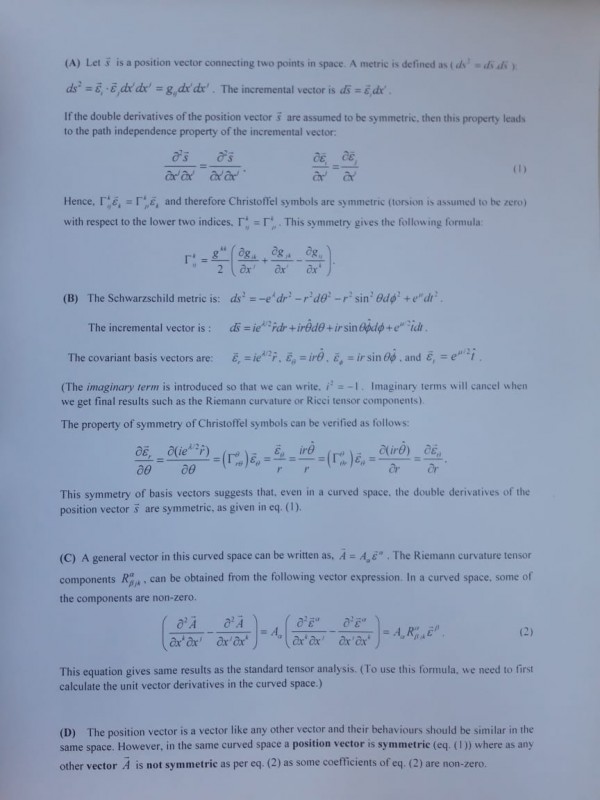The double derivatives of the position vector (see image eq. (1)), connecting the two points in a curved space-time defined by the Schwarzschild metric, are symmetric under no torsion condition. This symmetry of position vector leads to symmetry of basis vectors leading to the Christoffel symbol symmetry with respect to the lower two indices.
But double derivatives of any other vector are not symmetric (see image eq. (2)) as some of the Riemann curvature tensor components are not zero.
The position vector is a vector, like any other vector and there seems to be no reason why a position vector and any other vector should behave differently in the same space.
Is this because there is no appropriate geometrical framework to describe the curved space described by the Schwarzschild metric?
Kindly refer to the related question:
Is it incorrect to assume the Christoffel symbol symmetry (with respect to the lower indices) for a curved space-time?
Ref: https://physicsoverflow.org/44303/a-classical-scrutiny-of-the-schwarzschild-solution

 Q&A (4909)
Q&A (4909) Reviews (205)
Reviews (205) Meta (440)
Meta (440) Q&A (4909)
Q&A (4909) Reviews (205)
Reviews (205) Meta (440)
Meta (440)